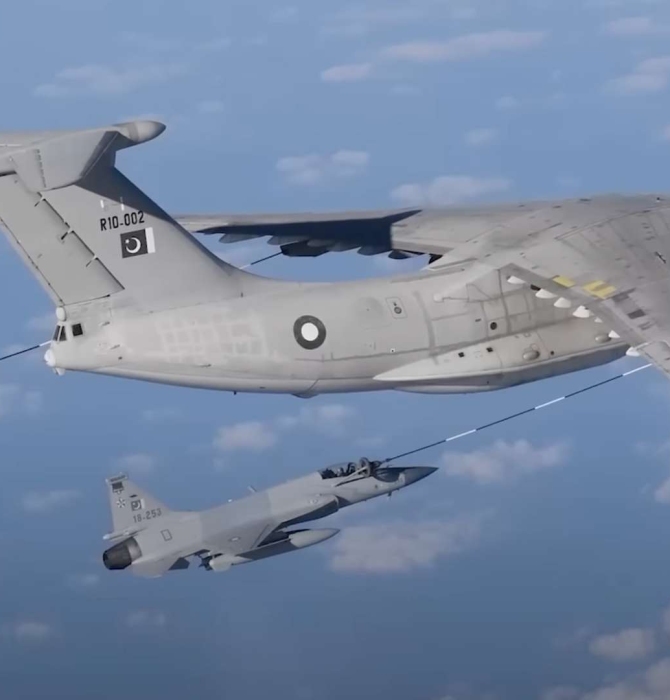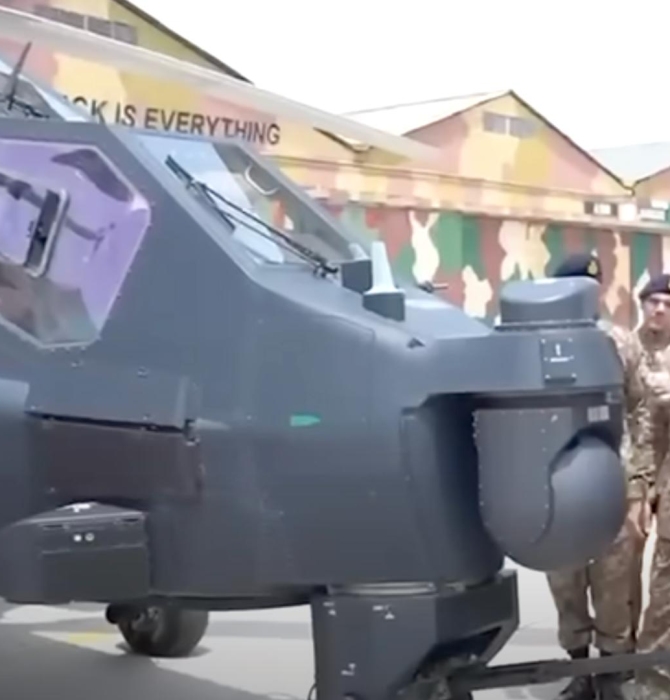4820Views

The Surprising American Roots of the Pakistan Air Force’s Recent Air Victories Defence Uncut Podcast
Recent analysis of the May 7th air engagement, notably a detailed report by Reuters, has prompted considerable discussion surrounding the efficacy of Chinese weapon systems, like the J-10CE and PL-15E air-to-air missile (AAM), and Pakistan’s strong execution in the air on 07 May 2025.
These reports examine the tactical variables that led to the Pakistan Air Force (PAF) inflicting notable losses on the Indian Air Force’s Rafale fleet, highlighting the performance of the J-10CE fighter and its associated long-range munitions.
The outcome challenges long-held assumptions about the dominance of Western platforms, suggesting a potential shift in the calculus of air power where intelligently integrated systems from non-Western suppliers demonstrate the capacity to contest the airspace.
While a technical and tactical examination of the engagement is crucial, a complete understanding of the outcome requires a deeper, historical perspective.
The proficiency demonstrated by the PAF – i.e., its capacity for rapid adaptation, tactical innovation, and effective battle management – is not a recent phenomenon. It is, instead, the product of a decades-long process of institutional and doctrinal evolution.
The factors that enabled PAF pilots to effectively leverage their platforms in 2025 have their origins in foundational decisions made over 70 years ago, creating a unique strategic culture.
In the latest episode of the Defence Uncut podcast, we delve into this critical backstory.
We are joined by historians Usman Shabbir and Yawar Mazhar, authors of Eagles of Destiny, to analyze the formative years of the PAF. Their insights illuminate how a specific warfighting philosophy was institutionalized, shaping the culture of training, planning, and tactical execution that persists today and provides the essential context for understanding the headlines.
You can buy the book(s) from Helion (if you are located outside of Pakistan) or Readings (for readers residing in Pakistan). Note: If you are purchasing the book from within Pakistan, you will get both Volume I and Volume II in one copy rather than two separate books.
Listen to the full episode on YouTube or your favorite podcast platform.
This Week’s Defence News Briefing: New Procurements and Capabilities
Before our main discussion, the Defence Uncut team provides a briefing on recent developments in Pakistan’s defense landscape.
Pakistan Army Inducts Z-10ME Attack Helicopter
The Pakistan Army Aviation Corps has officially begun inducting the Chinese Z-10ME, concluding a protracted and complex search for a modern attack helicopter.
This journey, which previously involved considerations for the American AH-1Z Viper and the Turkish T129 ATAK , has culminated in the acquisition of a platform that appears purpose-built for Pakistan’s high-threat environment. As discussed in the podcast, the Z-10ME is not merely a replacement for aging Cobras but a significant strategic asset.
It features a sophisticated suite of electronic warfare (EW) and defensive systems, a millimeter-wave (MMW) radar, and a varied weapons arsenal that includes air-to-air missiles, loitering munitions, and non-line-of-sight (NLOS) missiles like the CM-501, which provides a standoff range of over 25 km.
This standoff capability is critical, reflecting lessons from recent global conflicts about the vulnerability of helicopters in contested airspace. The induction represents a steep learning curve for the Army, which must now develop new doctrines to leverage these advanced systems effectively.
The procurement also serves to offset India’s significant investment in its own attack helicopter fleet, which includes the Apache and the indigenous Prachand, ensuring Pakistan can maintain a credible deterrent on its eastern front.
Pakistan Navy Launches New Patrol Craft
We also briefly cover the Pakistan Navy’s launch of the first of a new series of 20 locally built 38-meter gunboats, in collaboration with Swiftships. These vessels are intended for maritime security operations, acting as a middle layer between the coast guard and high-end naval assets.
The noteworthy inclusion of an Electronic Support Measures (ESM) suite suggests a secondary intelligence-gathering role, enhancing the Navy’s electronic surveillance capabilities in Pakistan’s littoral waters.
The Doctrinal Framework: From the F-86F to the J-10CE
The core of our conversation explores the thesis that the PAF’s contemporary performance is intrinsically linked to its formative period. The journey from a nascent post-colonial force to a modern, professional air arm was neither accidental nor inevitable; it was the result of deliberate, strategic choices.
Our guests identify several key aspects of this transformation:
A Nascent Force: The Post-Independence Challenge
The core of our discussion focused on the profound limitations of legacy data-links in the face of future oAt its inception in 1947, the Royal Pakistan Air Force (RPAF) lacked nearly everything required for an independent air arm, most critically, experienced leadership. As our guests note, there was not a single Pakistani officer who had completed a staff course at the time of independence.
The most senior Pakistani officer had less than a decade of total experience. The RPAF was, by necessity, led by seconded British officers who, while professional, were not tasked with the visionary nation-building required. This initial state of dependency underscores the magnitude of the transformation that was to come.
The American Inflection Point: More Than Just Hardware
The US Mutual Defense Assistance Program in the 1950s was the pivotal inflection point. While the program provided advanced hardware like the F-86 Sabre, its most profound impact was doctrinal.
The PAF leadership, most notably Air Marshal Asghar Khan, recognized that the Americans were offering not just equipment, but an entirely new and systematic “way of doing things.” The PAF seized this opportunity, choosing to absorb and adapt the USAF’s operational philosophy.
This was a conscious and radical break from the inherited British model. Asghar Khan’s vision was evident in symbolic yet powerful decisions, such as moving the Air Headquarters to Peshawar, away from the Army’s center of gravity in Rawalpindi, specifically to cultivate a distinct identity and culture for the Air Force.
Building the Institution Brick-by-Brick
This transformation manifested in several concrete ways discussed in the podcast. The PAF moved from the British model of squadron-level maintenance to a centralized, depot-level system favored by the Americans, vastly improving efficiency and standardization.
The entire organizational structure was reformed, shifting from the RAF’s “Group” system to a centralized branch structure for operations, maintenance, and administration. This change was critical for knowledge management, allowing best practices and lessons learned to be consolidated and disseminated across the entire force, rather than remaining siloed within individual squadrons.
Perhaps most telling was the evolution of a professional flight safety culture. The podcast recounts how Air Marshal Nur Khan, known as a risk-taker in his youth, later became a rigid enforcer of safety standards, once dismissing a squadron commander on the spot for performing a low-level barrel roll.
This anecdote illustrates a deep, top-down cultural shift from bravado to disciplined professionalism. The meticulous, multi-faceted process of institutional development, established over decades, created the framework that enables the PAF to master and effectively employ complex modern systems today.
Contemporary Implications: From Historical Doctrine to Modern Strategy
This historical context is directly relevant to understanding the May 2025 air battle. The institutional DNA of the PAF – its emphasis on rigorous training, analytical planning, and doctrinal flexibility – is what allows it to maximize the potential of its assets. The J-10CE is a capable platform, but its effective use in a complex, large-force engagement is a testament to the quality of the institution that operates it.
The PAF’s strategy of focusing on inflicting a high attrition rate on the IAF finds a direct parallel in the 1971 war. As our guests discuss, the PAF’s air strategy then was also designed to provoke the IAF into attacking well-defended Pakistani airbases, where PAF fighters could engage them at an advantage and impose unsustainable losses.
This approach, prioritizing the degradation of the enemy’s air power to achieve a strategic effect, appears to be an enduring feature of PAF doctrine, successfully reprised in 2025.
Looking forward, the engagement has highlighted the growing challenge of standoff weapons. India’s reliance on systems like the BrahMos and SCALP cruise missiles necessitates a robust Pakistani response.
This involves not only layered air defenses, potentially including systems like the CAMM-ER, but also a credible offensive deterrent. As discussed in the podcast, Pakistan must invest in its own standoff capabilities, such as the CM-302 supersonic-cruising missile, and have them available in sufficient numbers to ensure that any aggression can be met with a potent and proportional response, thereby maintaining strategic stability.
Listen to the Full Discussion
For a comprehensive discussion on these historical underpinnings and their contemporary implications, the latest episode of Defence Uncut offers an in-depth analysis from leading historians on the subject. The conversation connects the strategic choices of the past to the tactical outcomes of the present, providing essential context for understanding modern air power in the region.
If you would like to read more about what was discussed in this episode, check out the links below:
- The Blueprint for Pakistan’s Future-Proof Air Defence System
- Beyond Block-3: Why the JF-17 Thunder Remains Crucial for the PAF’s Future
- How a Smaller Air Force Can Dominate the Skies: Why the Pakistan Air Force is No Longer Counting Fighters
If you have any questions, comments, or news topic suggestions you would like to hear us discuss, then send us an email at podcast@quwa.org.


